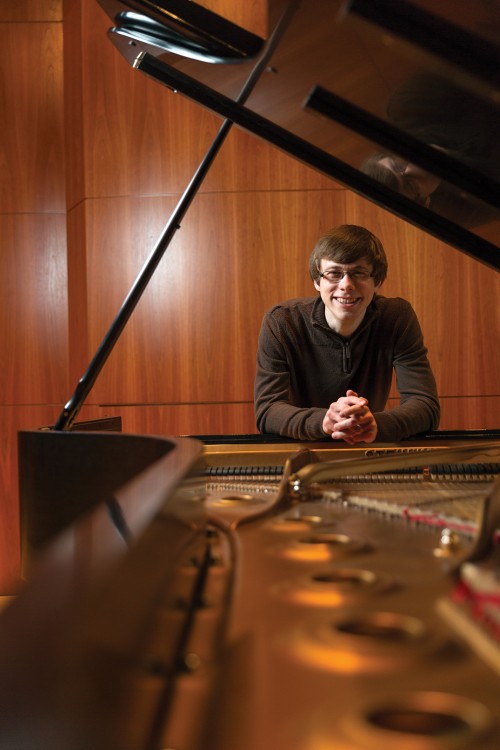We often hear about great performances given by Eastman students, but we hardly ever hear about the “academic side” of music. My good friend and colleague Braden Maxwell has had experiences in both. As an accomplished undergraduate piano player, brain and cognitive scientist, and music theorist, Braden has worked to transcend the boundaries of music performance and music perception. It is miraculous to hear great music. But it is truly phenomenal to understand the reason we are so inspired by these great performances. As Braden says, “Who wouldn’t want to understand that?”
What did you do this summer and for how long?
During the spring, I applied for and received a University of Rochester Discover Grant, which funds undergraduate research projects. According to the schedule outlined in my grant proposal, I spent May and June learning the computer language MATLAB and studying mathematical concepts relevant to digital signal processing, such as Fourier analysis and convolution. Then, during the second part of the summer, I worked in the Carney Lab, which is an auditory neuroscience lab at the University of Rochester Medical Center. The Carney Lab has a computer model that simulates how certain parts of the brain respond to sounds, and I worked on a team that investigated responses to several different types of noises and pitches. I am especially interested in responses to musical sounds, and as part of this grant I started investigating brain responses to complex tones and vibrato.
How does what you did relate to your studies at Eastman?
This relates closely to my studies of music theory at Eastman; in a way, studying pitch perception in the brain is just understanding “how music works” on a very microscopic level.
How has your musical preparation helped your studies?
My musical preparation at Eastman was tremendously helpful for undertaking this summer project; it gave me a clear view of the significance of the neural processes I was studying.
What was most exciting about working in the lab this summer?
The most exciting part of my job this summer was seeing the simulated brain responses. It was amazing to see the intricacy and precision that underlies our perception of music.
How does what you do relate to both the academic and musical sides of music study?
Although this project certainly engages the academic side of my passion for music, it also enriches the amazement that I experience when listening. It is hard to stop myself from imagining the incredibly complex design that is unceasingly operating behind the scenes, enabling us to perceive every infinitesimal moment of music.
How will what you do in the lab contribute to music in general?
Pursuits like these by neuroscientists and music theorists are part of uncovering the inner workings of music – in this way, they contribute to our wonder at the precise biological design underlying our own musical experience. Exploring these questions opens up a new door for my own musical appreciation, and I believe that it helps others open up this door as well.
How did you become interested in the academic side of music?
I became interested in the academic side of music because music is an enigma; it is a powerful part of human experience that helps us transcend a purely practical view of our lives. It points us toward feelings that we do not understand and concepts that are too vast to put into words. Who wouldn’t want to study that?
— Andrew Psarris
